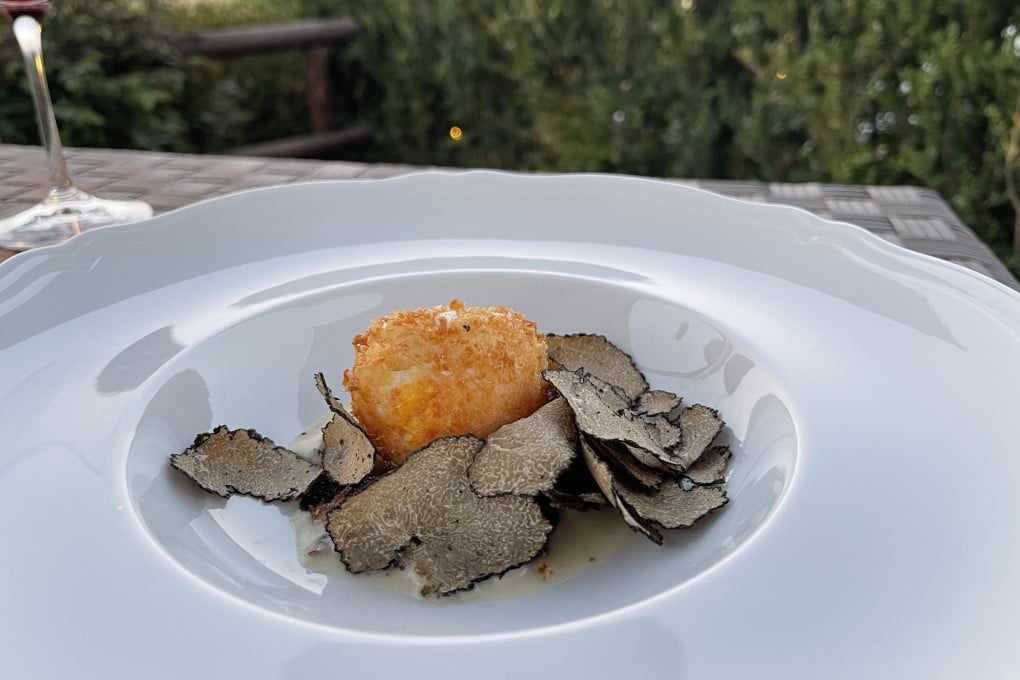Truffle hunting in Italy’s Alba and Chianti regions and where to eat ‘the Mozart of mushrooms’ in Hong Kong
- Italian truffles are dug up in places like Alba and Chianti by hunters with specially trained dogs, and joining them on the search is an experience unto itself
- Whether simply shaved over eggs or pasta or woven into more complex creations, the truffles are all the more striking when paired with local wines

“Ha trovato! Brava!” (She found one! Well done!) rings out in the distance through the oak trees as we run towards the voice through sun-dappled leaves, damp soil underfoot in the early autumn morning.
It’s only 10 minutes into our hunt for truffles in a forest deep in the hills of Chianti, in Italy’s Tuscany region, but the pair of adorable lagotto romagnolo dogs leading the way have already found their third black truffle of the day.
A brother and sister, Iside and Rigel belong to Francesco Veltorni and his wife, Maria Grazia. We’re here at the very tail end of black truffle season, with white truffles set to appear in the coming weeks. Not that Iside and Rigel care. Their unbridled joy and enthusiasm is infectious as they scamper tirelessly through the undergrowth, stopping and sniffing intently, before they begin to paw away at the ground to unearth the valuable fungi.
They dig deep, after which Veltorni uses a trowel-like implement to carefully prise the black diamond from the packed soil, before rewarding the dogs with a treat.

He explains that truffles can be found year-round in Chianti, but it’s still a few weeks before white truffles come of age and develop into the musky, aromatic nuggets that are so prized – and valuable.
“The conditions have to be balanced,” he says. “Truffles are 90 per cent water, so too much rain is not good.”